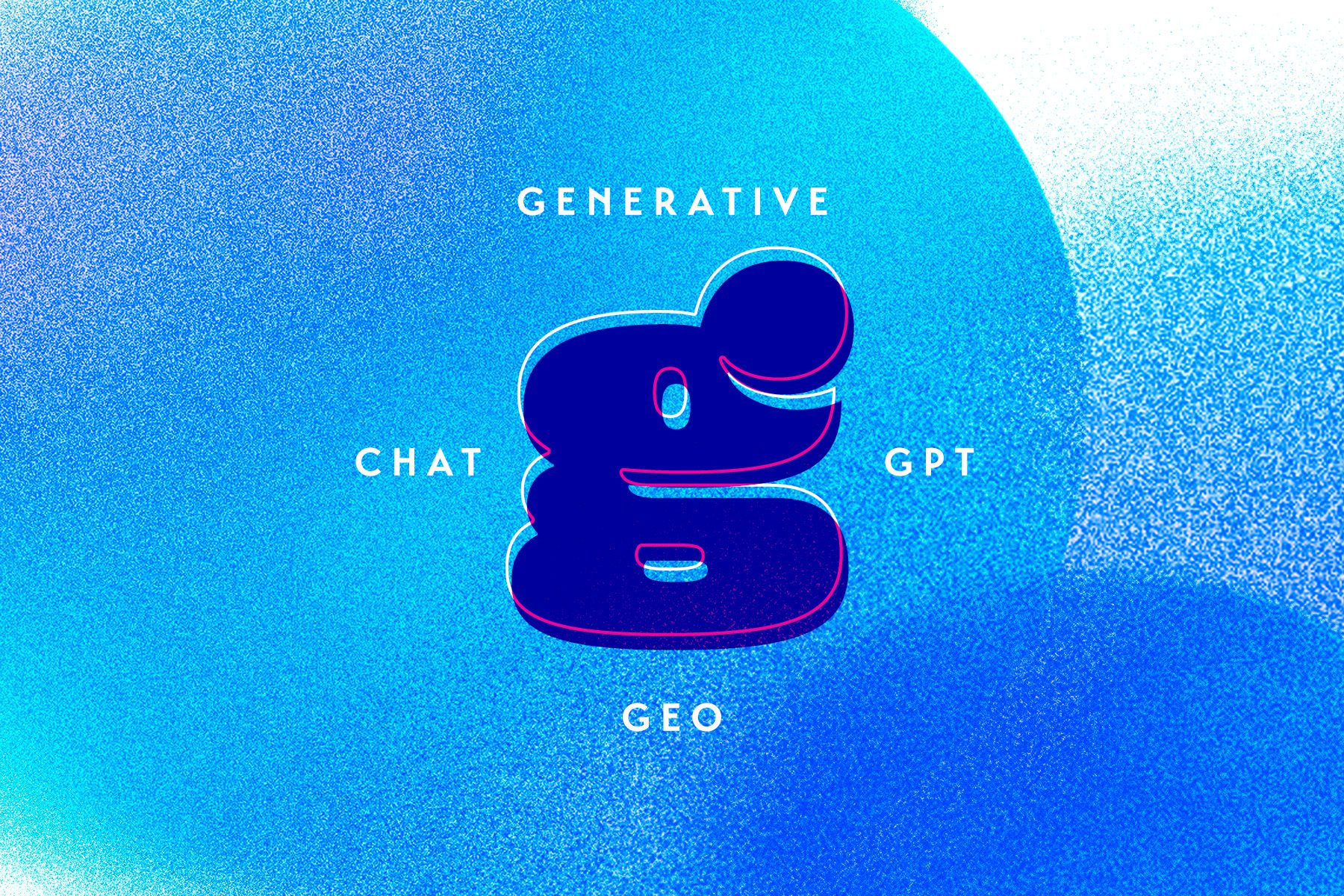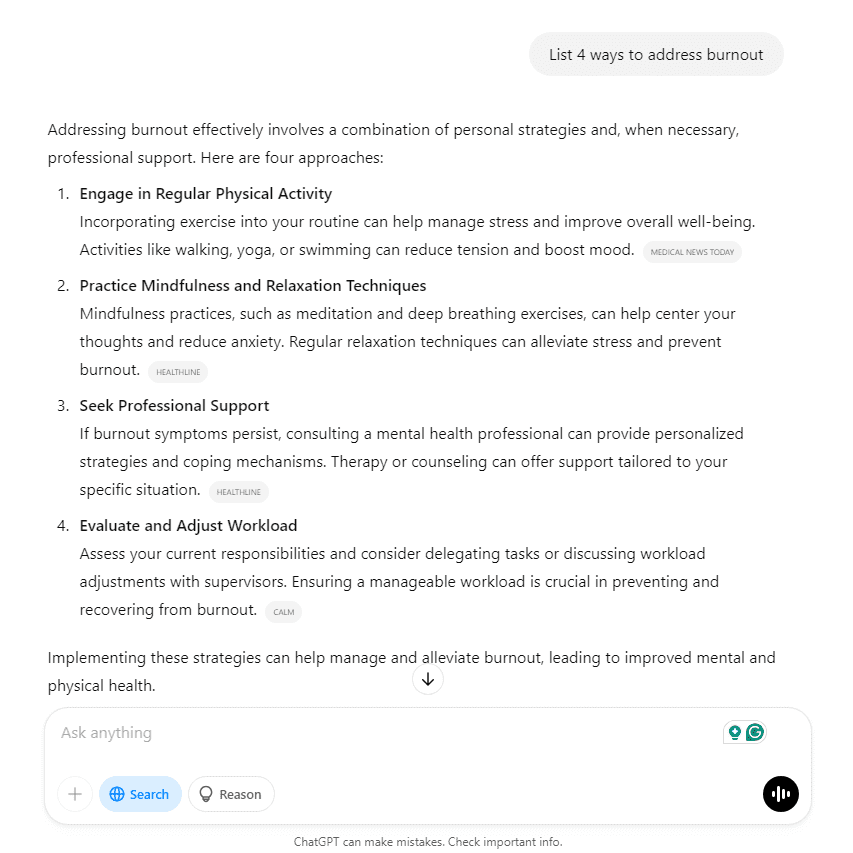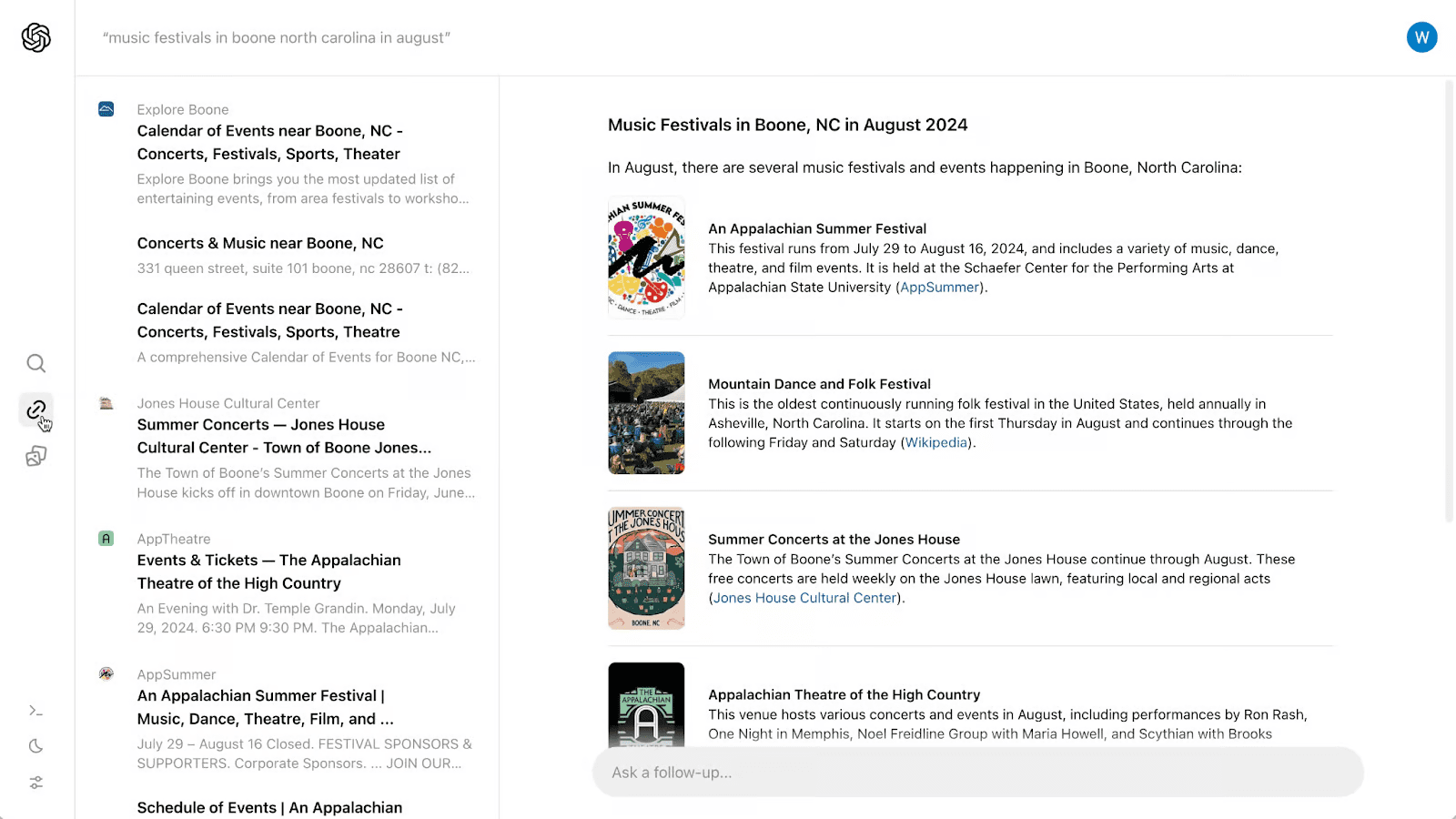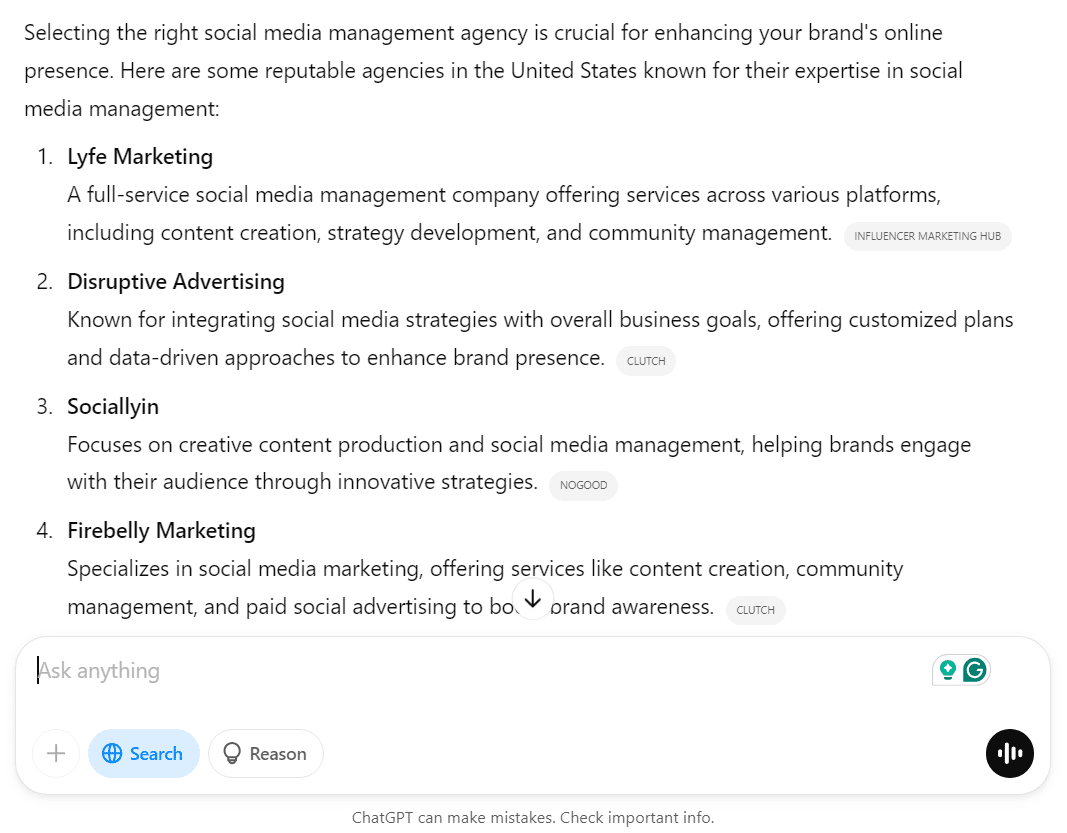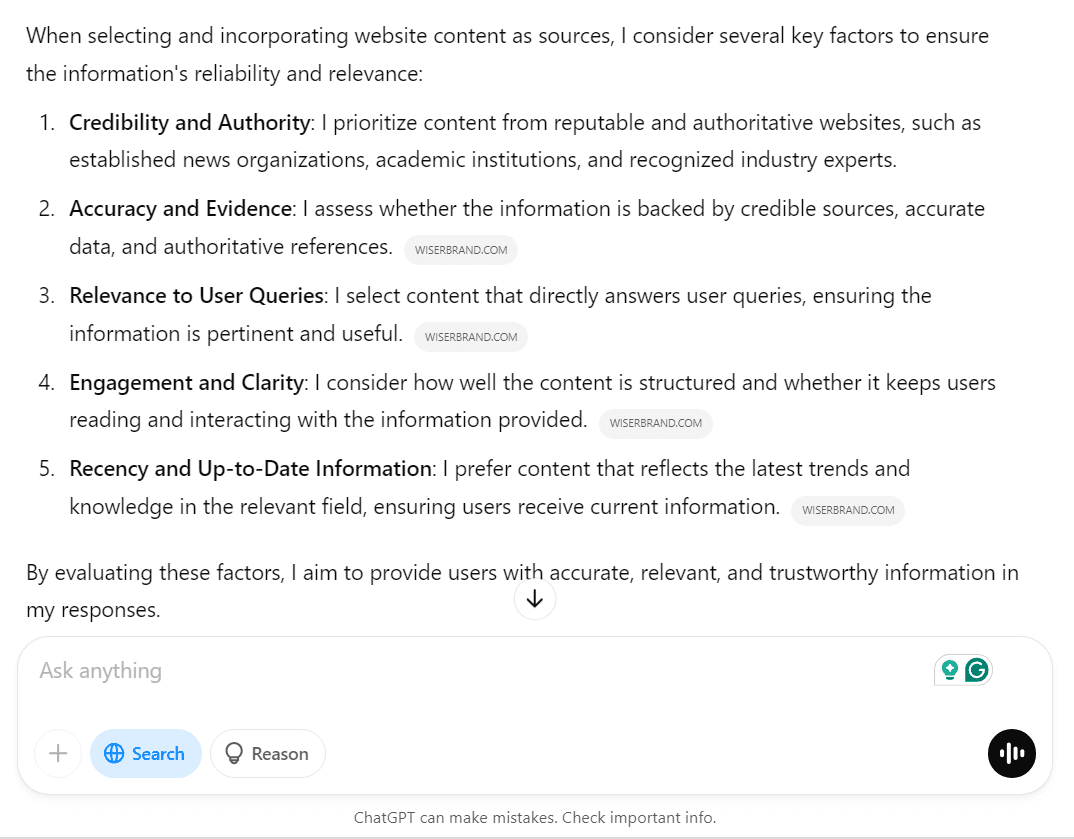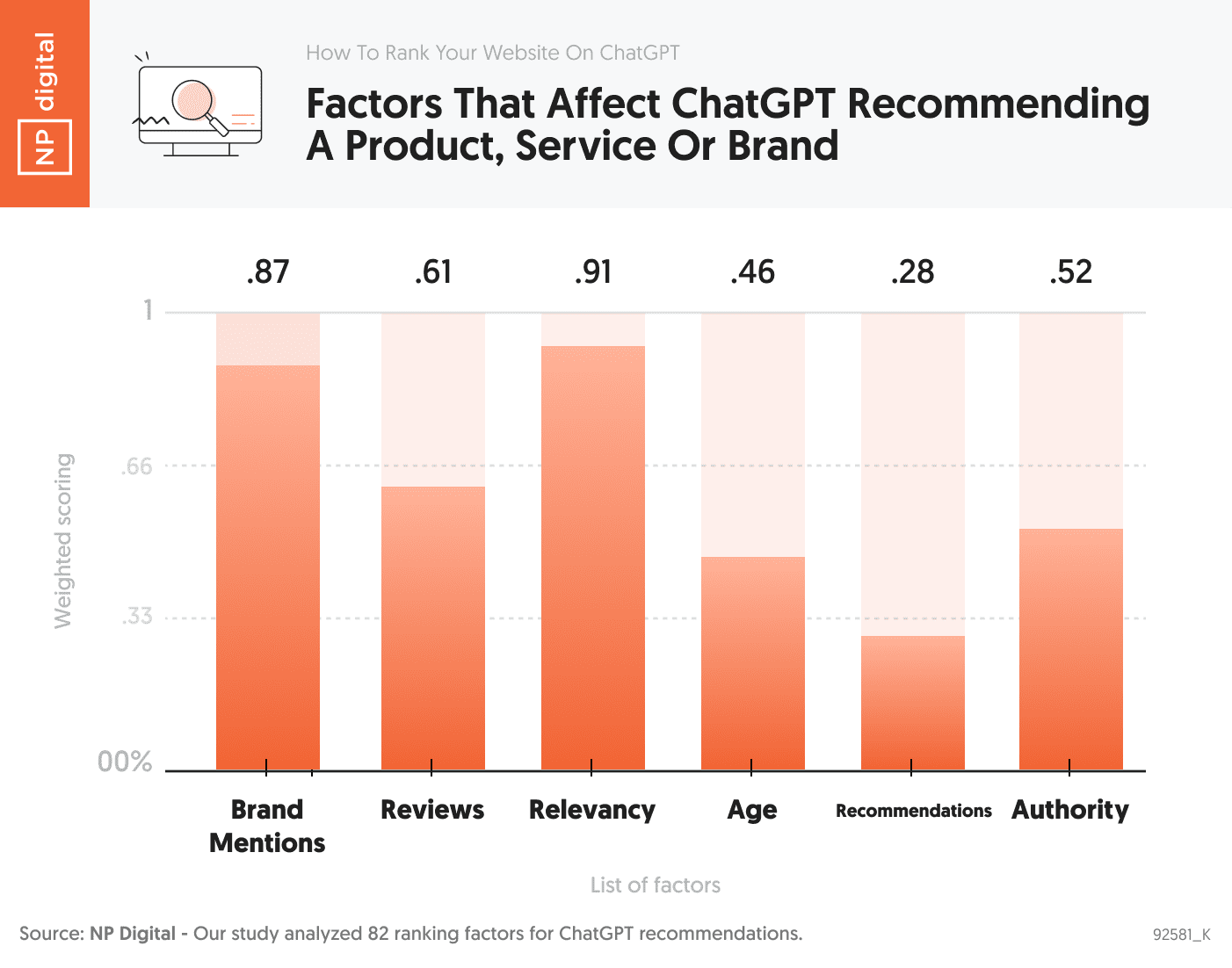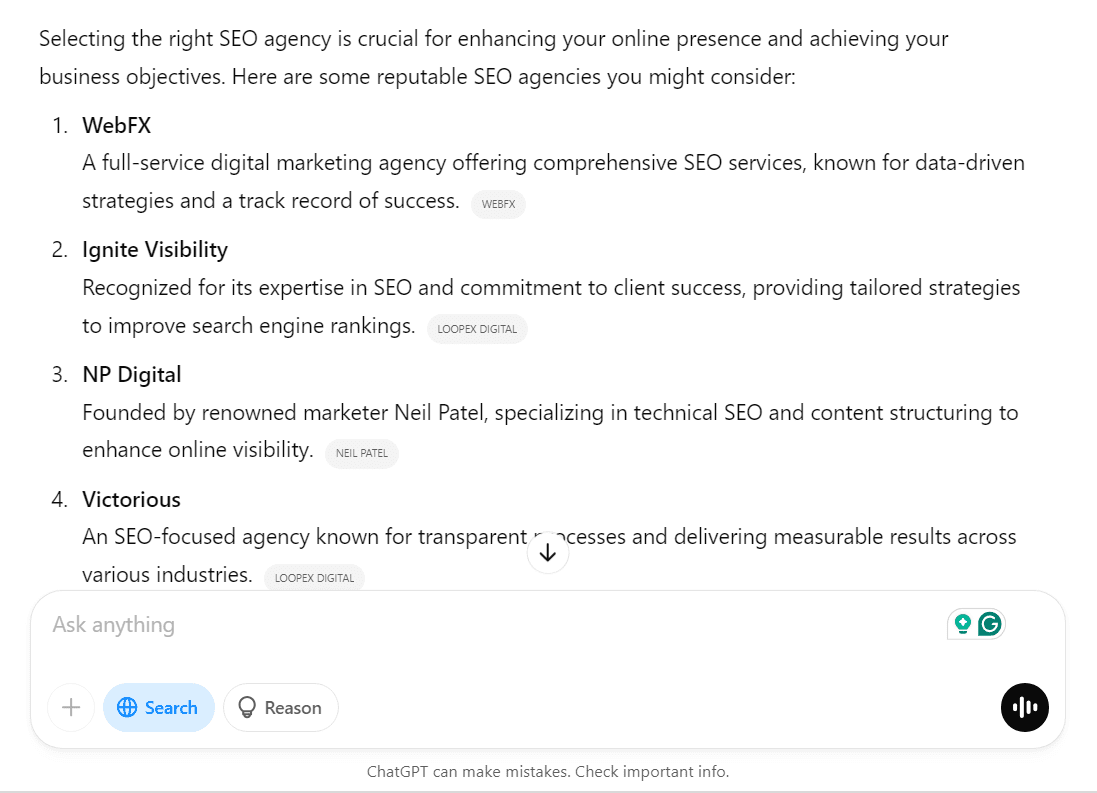Search engine optimization (SEO) for an AI agent like ChatGPT? That’s definitely something you would never have heard a couple of years ago.
Google and Bing have long been the go-to options for Internet searches. However, that narrative is gradually changing. AI can now retrieve data from the Internet in real-time to answer user queries, while linking back to the original source.
An Ahrefs study found that 63% of websites are now seeing traffic from AI platforms, although currently less than 1% of most sites’ total traffic comes from those sources. There’s high potential for that number to increase as AI tools become more popular – and more accurate.
Optimizing your website content to be cited by ChatGPT, or any other generative AI, is called generative engine optimization (GEO). And learning to do it right can help boost your website’s visibility, or even create lead opportunities.
Let’s see how that works in this article and what GEO factors to consider for ChatGPT.
How Does ChatGPT Work For SEO?
ChatGPT currently has over 300 million weekly users, receives over 1 billion daily queries, and ranks 9th on the most-visited websites. When the AI-powered chatbot receives a query, it sieves through a large library of pre-trained knowledge to provide answers. These responses are often static, not explicit, and derived from existing data.
Here’s an example:
However, in some cases, especially when the user manually requests it, OpenAI’s GPT can directly access the Internet via Bing’s search engine for real-time answers. The responses occasionally include linked references, which allows users to explore more information on the source website.
For instance, when we activated the “search” option and asked the same question, we got this:
Notice the additional references in gray boxes, and more details compared to the initial response. Our main focus for GEO is the references.
OpenAI further released a prototype look at searchGPT to help users appreciate source materials.
Getting your website listed as a source on a bot that’s used by 300 million users weekly is beneficial in different ways:
- It boosts your website visibility, increases traffic, and adds one more active referring source to your list.
- Higher visibility can lead to more inquiries and conversions, expanding your customer base and driving business growth.
- Analyzing referral traffic from the chatbot can provide insights into user interests and behavior, which can inform your content strategy and product development.
GPT doesn’t just use your web content to answer user queries; it can also advocate for your brand when asked questions like, “I’m looking to hire an agency for social media management. Which ones do you recommend?”
Direct recommendations from ChatGPT can boost trust and save you a ton of effort in converting your leads.
GEO vs. SEO: Are They Any Different?
Yes, they are different.
Brooke Webber, Head of Marketing at Ninja Patches, says, “Generative engine optimization focuses on helping you appear on sites like ChatGPT and Gemini, whereas SEO helps you appear on search engines like Google and Bing. That means you need to go beyond the usual SEO tactics, such as keyword optimization, backlinks, and technical website adjustments.
“However, GEO and SEO have quite a number of meeting points, including creating quality content and addressing user intent, as well. So, you can simultaneously implement strategies for both without compromising your website’s performance”, he continues.
Moreover, SearchGPT heavily relies on Bing to access the Internet. Thus, optimizing for Bing aligns with tactics to appear in search results within ChatGPT.
When it comes to measuring results, SEO performance is typically evaluated by positions, traffic, and conversions using analytics tools provided by target search engines (for instance, Google Analytics and Google Search Console for Google) and other SEO platforms. GEO, on the other hand, expands this by tracking brand mentions, citations in AI responses, and overall visibility across generative engines using tools like SE Ranking.
GEO Factors To Consider For ChatGPT
We asked ChatGPT for the factors it considers when choosing a website to reference, and it came back with credibility, relevance, accuracy, recency, and engagement.
NeilPatel conducted more in-depth research and leveraged ChatGPT’s response to conclude on a few factors: brand mentions, reviews, relevance, website age, recommendations, and authority.
This outcome aligns with what we initially deduced. While the age of your website is out of your control, you can optimize the remaining factors to put your website on ChatGPT’s radar.
Let’s walk through how to do that.
1. Ensure Crawling by SearchGPT’s Bot is Enabled
During the initial release of ChatGPT, numerous websites opted to block OpenAI’s web crawler to prevent their content from being accessed to train AI tools. If your website was among them, your robots.txt file likely includes the directive “Disallow: /” under the “User-agent: OAI-SearchBot” section. This configuration effectively restricts OpenAI’s crawler from indexing your site’s content.
To get back on the radar, edit your robots.txt file and insert the following:
User-agent: OAI-SearchBot
Allow: /
This will enable GPT’s search bot to crawl and allow indexing. Even if you’ve never restricted crawling access, you should still check to confirm that there are no issues with your robots.txt file.
Additionally, you need to submit your sitemap to Bing via the webmaster tool, since SearchGPT uses Bing to access the Internet in real-time. Getting indexed on Bing increases your chances of appearing on ChatGPT.
2. Create Good Content
Similar to Google and Bing, ChatGPT prioritizes delivering quality content in order to boost customer trust, and it will likely steer clear of shallow, generic website content. To receive a green mark, you need to create good content. And you can ace that by following Google’s E-E-A-T (Expertise, Experience, Authoritativeness, and Trustworthiness) guidelines.
- Experience: Demonstrate first-hand experience by incorporating case studies, personal anecdotes, or detailed analyses that showcase your direct involvement with the subject matter.
- Expertise: Highlight your qualifications, professional background, and the depth of information in your content. To further enhance your perceived expertise, collaborate with subject matter experts or obtain relevant certifications.
- Authoritativeness: Build authoritativeness by earning mentions from reputable sources, acquiring quality backlinks, and engaging in industry discussions. Publish well-researched articles and whitepapers, or contribute to respected publications.
- Trustworthiness: “Establish trustworthiness by ensuring accuracy in your information, citing credible sources, maintaining a professional website design, and providing clear contact information. Trust seals, customer testimonials, and adhering to data protection standards further reinforce your site’s reliability,” Kathryn MacDonell, CEO at Trilby Misso Lawyers, contributes.
E-E-A-T primarily helps you gain more visibility on the Internet, and the more visibility your website has, the more brand mentions and positive reviews you get. The mentions and reviews are a badge of your credibility—a factor ChatGPT highly considers when reviewing content and sources to use.
Other things you can do to make your site a go-to source for GPT:
- Don’t create scanty articles. Be as comprehensive as possible about a topic without adding fluff. The goal is to give search engines and GenAIs all the data they need in one place.
- Apply proper formatting with hierarchical headings. This not only aids user readability but also helps ChatGPT scan your content faster and extract useful information.
- Tom Golubovich, Head of Marketing & Media Relations at Ninja Transfers, encourages “Incorporating keywords in strategic areas. This includes your headings, introduction, meta title, and meta description. Keyword stuffing does not significantly increase your chances of being referenced or recommended by AI, and it might instead attract penalties from search engines.”
- Add valuable statistics. Original figures help GPT vet the information it’s getting from your website.
- Ensure accuracy as much as possible. You can do this by reviewing your content for grammatical errors, clarity, and coherence. You also want to avoid adding untrue claims that can affect your credibility.
- Frequently audit content for recency. Remove outdated statistics, add fresh content to keep your website evergreen, and remove pieces that do not add value.
Michael Nemeroff, Co-founder & CEO at RushOrderTees, says, “Good content addresses user intent, also known as search intent, which refers to the goal a user has when typing a query. Primarily, most of the queries on ChatGPT are informational, which means you should focus on digging out the ‘what is?’ of your target audience. Then create detailed content addressing these informational queries so that ChatGPT can reference them.”
3. Optimize Your About Page
Optimizing your website content, such as blogs and case studies, enhances their likelihood of being used in providing answers. However, this alone doesn’t necessarily position your brand as the preferred choice for the services you offer.
To enhance your brand’s presence on relevant recommendation lists, it’s essential to optimize your “About Us” section by providing comprehensive and engaging information.
- Clearly articulate your mission statement and values.
- Share your company’s growth stories, challenges, and milestones.
- Incorporate customer testimonials and case studies.
- Add essential certifications, awards, and other industry-related accolades.
Lastly, insert primary keywords to boost your visibility and help you appear on SearchGPT’s radar for relevant queries.
4. Improve Website Structure
Samuel Charmetant, Founder at ArtMajeur by YourArt, defines website structure as the “organizational design of a website—how the pages connect to each other. This can be hierarchical, matrix, sequential, or database. However, the hierarchical model is more streamlined and helps ChatGPT and search engines crawl sites faster than others.”
The implication of this is that SearchGPT aims to provide answers to users in seconds after reviewing millions of sources. Navigationally complex websites take longer to crawl, and that leads to two outcomes:
- They’re eliminated from the crawl list.
- Or they’re pushed to the end of the crawl queue.
To avoid that:
- Employ a hierarchical site structure to facilitate easier navigation and crawling.
- Create human-readable URLs that reflect the content and structure of your site, aiding both users and crawlers.
- Maintain shallow link depth by ensuring important pages are accessible within a few clicks from the homepage to improve crawl efficiency.
- Use clear and relevant anchor texts for internal links to establish content relationships and guide crawlers.
“Note that the hierarchical model might not necessarily work for ecommerce sites because of the complexity and vastness of product catalogues, which can make rigid hierarchical structures cumbersome and less user-friendly. For instance, a typical automotive ecommerce site can host up to ten thousand different pages on car products. Imagine trying to stack each car product by categories—we’ll end up with sea-level link depth,” Lev Peker, CEO at CARiD, says.
This makes crawling complex and time-consuming. Alternatively, apply the database model and ensure each dynamic page on your ecommerce site has a static or unique URL that the bots can crawl.
Wrapping Up
Optimizing your website for ChatGPT’s “search engine” can boost your traffic, improve visibility, and enhance lead generation. Start by enabling crawling permissions for searchGPT via your robot.txt file. Build credibility and trustworthiness through quality content.
Also, optimize your About Us page to increase your chances of appearing on brand recommendation lists. Lastly, streamline your website structure for easy crawling and submit a sitemap on Bing to enable cross-indexing from the search engine to ChatGPT.
